1992 - A Trip to Beerfelden, Germany
Returning to Beerfelden im Odenwald in 1992—with a detour to Berlin
In summer 1992 I carried out extensive research and used sources in the Zentralstelle für Genealogie in Leipzig and the assistance of the Zentralarchiv zur Erforschung der Geschichte der Juden in Deutschland (in Heidelberg). Just a few days after I requested information, the Leipzig institution sent me a stack of photocopies of microfilmed sheets, which the Nazi genealogists had apparently made. I also went through the original Birth, Marriage, and Death records in the Beerfelden town hall.
In my mind was a vague memory of our German-Jewish family tree, which I saw at my grandmother's house.
|
May 8, 1992. I received some very interesting materials from Peter Honigmann bearing on the (Feist) Moses family in Beerfelden—dating back to the late 18th century! Until 1992 I found no opportunity to visit the city of my ancestors in Germany. It was my unprecedented loneliness in Heidelberg that brought me the extraordinarily powerful genealogical energies.
Had I lived in calmer and more content circumstances, I doubt that I would have had the inclination to go back two hundred years in my family history. I taught at the Hochschule für Jüdische Studien in Heidelberg, occupied a dark apartment, and had few acquaintances. I felt a certain pressure to explain why, in spite of everything, I belonged to that place. Although I had no circle of close friends, I found myself in proximity to close relatives—albeit six feet underground.
May 11. On the track of the Moses family from Beerfelden im Odenweld, 1797! My grandmother, Evelyn Gutman Frieden, was the daughter of Sadie Moses Gutman and the granddaughter of Wolf Moses, who was born in Beerfelden in 1838. She owned several enigmatic documents from Beerfelden, such as postcards, photos, and a family tree. [Many of these postcards and photos appear in this post, as does the family tree above].
These things played no special role in my life and consciousness. After I completed my college education, however, I studied German during the summers of 1977 and 1978—at the Goethe Institute in Grafing-Ebersberg and Freiburg im Breisgau. Only once in those years did I meet someone who had visited Beerfelden.
From my grandmother Evelyn I inherited postcards that show a panorama of Beerfelden and close-ups of the Mümlingquelle (the Mümling Fountain), the Viehgasse (“Cattle Street”; today Hirschhorn Street), the Bäckerei Zur Sonne (“Backery in the Sun,” now a hotel at Geißgasse 7), and the gallows. I was told that these souvenirs came from a trip that my great-great-grandfather, Wolf B. Moses, took sometime before he died in 1932.
|
My grandmother knew some German and could recite a few poems by Heine and Goethe. She recalled that her grandfather bought the collected works of Schiller and Goethe in English, so that his children could read them. I felt very close to the German-Jewish side of my family, temperamentally and culturally.
Evelyn Gutman Frieden was very well read, especially in nineteenth-century British poetry, and she herself wrote and occasionally published poems in that style. (See her skeptical poem, “Thank God, My Neighbor Says”, published in The Liberator in Sept. 1919).
|
Evelyn studied writing around 1921 at Columbia University, where she met her future husband Alexander Frieden. He had received an M.A. in philosophy but went on to receive a Ph.D. at Columbia in Chemistry.
While doing graduate work in comparative literature, I also studied German literature and philosophy; and so it happened that I lived in Freiburg and Berlin from 1979 to 1981. This strengthened my affinity for German life, although I never experienced a greater feeling of solitude than in Germany. During the 1980s I returned to Hebrew and Yiddish and spent two summers and then two full years in Jerusalem. Visiting Germany meant connecting with a nebulous part of my identity, while visiting Israel put me in contact with the complex reality of Zionism and post-Zionism. Germany helped me understand my attraction to German culture, while Israel imprinted upon me a specific education in Jewish traditions.
May 24. During a telephone call, my brother Jeff confirmed that we are descendants of Feist Moses! Then traveled to Beerfelden and Michelstadt through the benevolence of Sharon Levinson. Found the Mümlingquelle and Judengasse as well as the site of the destroyed synagogue.
|
But the city has done very poorly with restorations—most of the original red sandstone and Fachwerk have been covered over, and the cobblestones are gone. Met a hotel cook whose boss was a ritual slaughterer?! Could not locate the cemetery [because the old Jewish cemetery was not in Beerfelden].
Then on to Michelstadt, which has been much better preserved. The synagogue was rebuilt (currently open the 1st and 2nd Sunday each month) and the cemetery is impressive. Unfortunately, the city built a vast, ugly, and noisy Schwimmbad (public swimming pool) across the street from the Friedhof.
|
May 31. Excellent trip through former Jewish sites on the Western side of the Odenwald—Bergstraße. Started from the north at Auerbach and saw the synagogue, guided by Minister/Reverend Lesser.
|
|
Traveled south and saw from outside the synagogue and mikve (ritual bath) at Hemsbach. Then returned north to Heppenheim for an appointment at the Martin Buber Hans with Rev. Dr. Jacobus Schoneveld, an instructive visit also enabling me to copy Buber's version of Nahman's Tale 6 in the 1906 edition.
|
Thence back to Hemsbach, turning left across from the old town, up a mountain to the most beautiful cemetery I have ever seen.
|
This reminds me of Nahman of Bratslav’s comment, on viewing the old cemetery in Uman: Do iz gut tsu lign, That’s a good place to lie; and so, in 1810, Nahman went there to die.
|
Finally a trip to Weinheim, which is an atmospheric town like Michelstadt, with well-preserved Fachwerk (wooden beams showing in the stucco façade).
|
Berlin, June 5. Friday: Off to join a tour of the Jewish sites in East Berlin. Saw them on a rather superficial level. The razed Jewish cemetery on the Große Hamburgerstraße—where Moses Mendelssohn was buried; the Nazis covered the entire thing over. Then the Adas-Israel building, newly put back into use, and a children’s school (Kinderschule) in the direction set by Mendelssohn. Also saw the Oranienburgerstraße Synagogue from outside, as its renovations are under way.
Met Münz, one of the 200 members of the former East Berlin Jewish community. Then a wild goose chase to the Jewish cemetery at Weißensee, which had already closed before I started out on my 1 and 1/2 hour trek. Finally, some recovery by meeting two acquaintances, Michael Brenner and Katharina Ochse, in Lichterfelde.
Bodenlosgkeit. The lack of a stable ground; or, on being a Luftmensch. I feel like Paul Mendes-Flohr when he was jetlagging and at a loss in Atlanta; or Stefan Zweig’s Buchmendel lost in Berlin. And my eyes are opened. But why am I doing this?
`Erev shabbes, Friday evening before Shabbat: to the Orthodox Synagogue in the Joachimsthalerstraße, a fine, spacious, well-preserved building that is just off the Kurfürstendamm. Impressive cantorial contribution; otherwise rather empty. Then invited to "Kiddush" (blessing over the wine and light meal) with a Yemenite family, the shohet (ritual slaughterer), his wife, and several kids who live upstairs in the front house on the fourth floor. Suddenly transported by "magic carpet" to Israel: three Israelis were also invited and in the course of four hours we spoke only Hebrew. Impressed by some of the Yemenite melodies and the serious discussion.
June 9. Tour with Ronnie Golz. Deportation Memorial at the Grünewald Railroad Station—50,000 Jews were transported to concentration camps from this wealthy area surrounded by villas. At sites like this I always find it difficult to suppress my anger. Dellbrückstraße. Jüdische Kindertagesstätte. Then to the Jewish Old Age Homes, Jeanette Wolff and Leo Baeck. Jüdische Grundschule on Bleibtreutrasse, where hundreds of Jewish kids study—6 years to 12 years old. A high school is soon to be opened.
Fassanenstraße Jüdische Gemeinde, with library and small Judaica selection. Impressive use of "spolia" (“spoils of war”?). Lewetzovstr. Synagogue/destroyed memorial in Hansaviatel of Moabit. 37,000 Jews deported from here. Metal relief sculptures of Berlin synagogues. 175,000 members of the community in 1933; "only" 55,000 deported. Putlitz station with another memorial of deportation. Jüdisches Kraukenhaus (Jewish Hospital) on the Iranische Straße, founded 1756. Weißensee Friedhof (cemetery). A relative? Eduard Feist, born 14 April 1838, Koblenz; died 1899 in Berlin.
Hermann Cohen—sarcophagus with Hebrew. Leo Baeck; Micha-Josef Bin-Gorion [Berdichevsky], the Hebrew and Yiddish writer who died in Berlin, 1921. Other Hebrew writers? Ryckestr. Synagogue—traditional. Then modern archeology, an exhibit near Anhalter Bahnhof of underground torture/prison cells—Topographie des Terrors. Mein Kampf, a play in "East" Berlin [since the wall fell three years ago], odd treatment of Jewish-German relations.
June 12. Fine visit to the Hartmans at Neumattenstr. 10, Freiburg im Breisgau. Mediated by the German Academic Exchange, I lived for a few weeks in their house at the end of the summer (the beginning of my two-year stay) in 1979. In Freiburg and Berlin I studied German authors, played with university orchestras, walked on cobblestone streets, and ate the best cheeses of Europe on the best multi-grain bread. (I remember my grandmother’s old, embroidered tablecloth and napkins from Germany; each bore a saying, such as ”Hunger is the best cook.”)
|
As he took me to the train station, because I was on the way to Switzerland, Günter Hartman mentioned that he studied once with Heidegger, who helped him by criticizing his Idee-Begriff. I realized that this had to be before 1945, when Heidegger was barred from the university as part of the de-Nazification. It turns out that after he served in the army and was wounded, my host Günter Hartman was sent to study in Freiburg in 1944. This didn't last long, however, because soon thereafter the heavy bombings of Freiburg began.
June 18. Travel to Hirschhorn, Beerfelden, and Michelstadt. Triumphal arrival at Hirschhorn Schloß accompanied by horn music.
|
Mümlingquelle restoration underway in Beerfelden; and a basement inscription from 1507 on the Judengaße (!?) reminds of Wolf Moses’ carving from 1852. Also the infamous Galgen (gallows).
|
At the best hotel in Michelstadt, the DREI HASEN, built in 1813.
|
June 19. In spite of cold, rainy weather, I had a worthwhile visit to the synagogue and cemetery in Michelstadt.
|
With Martin Schmall, who is 82 but still active. I found some gravestones that may be from the Moses family; others presumably were destroyed by the Nazis in 1938 and thereafter.
|
I studied the inscriptions on tombstones in the Michelstadt cemetery and benefited from entries in Winfried Günter’s (unpublished) master’s thesis, The Jewish Cemetery in Michelstadt. I followed my family back to the eighteenth century and then forward to their departure from Germany in 1855 and 1857. Then I found a striking record of the conditions under which my ancestors left.
On May 31st, 1857, Koppel (Jacob) Moses submitted his application to emigrate: “Koppel Moses, of local origin, appears and declares: my family and I intend to emigrate to North America and therefore request—for myself and in the name of my family—permission to be released from this principality/township (?Stadtverband). I am of the Mosaic Belief, without a trade, 49 years old. My family consists of my wife Rosina, 45 years old, and my children Jethe, 23 years old, Baruch, 14 years old. I am poor, have no means (Vermögen). The necessary expenses of the journey are being defrayed by my relatives. I have no debts and there are no legal claims against me, I am not subject to any fines, and I am not involved in an investigation regarding anyone. (Signed) Koppel Moses.”
The permission to emigrate was granted with the remark that two of his sons were already in the USA. This occurrence was the necessary precondition of my ancestors’ departure from Germany and of my birth a century later.
My grandmother had a detailed family tree, which I inherited. It begins with Feist Moses, Feist Rosenthal, Isaak Sondheimer, and Daniel Gedalia Moses (1765-1858). It continues with the family of his son Jacob Koppel Moses (1809-1871), and his son W. B. Moses, followed by his daughters Bessie (who never married) and Sadie Gutman (my father’s grandmother).
|
I was told that this family tree had been prepared by W. B. Moses. In the uppermost branches of the tree are Sadie’s daughter—my grandmother Evelyn, branching to my father Julian and my uncle Carl.
June 21. Traveled up the Bergstraße. As in my first trip, the high point was the cemetery on the Au in Hemsbach. (Also enjoyed Heppenheim and Weinheim.)
|
Perhaps the best argument against cremation—apart from the Holocaust. A really scenic cemetery somehow makes dying seem less definitive, less tragic.
|
June 24. Intersection of past and future. At the Kosher Mensa of the Hochschule für Jüdische Studien in Heidelberg there was lively talk about the Israeli elections, which point to a government led by Rabin (Labor)—finally, after 14 disastrous years with Likud and Shamir.
In the neighboring room, with Uri Kaufmann, I reviewed the Geburts-, Hozhzeits-, and Sterberegister (records of births, weddings, and deaths) from 1810-1873, Beerfelden, concerning my family MOSES. The written records go no further back in time than 1810, because the town burned down during the Napoleonic Wars.
Suddenly I realized that the oft-mentioned Koppel Moses was my great great great grandfather Jacob Moses (father of Wolf, who was father of Sadie Moses Gutman, who was mother of Evelyn Gutman, who was mother of my father Julian E. Frieden). Jacob (Koppel) Moses appears on my family tree; by chance (?), 30 years ago, I chose the Hebrew name Jacob.
|
On a list of family members that my grandmother had preserved [and I have now inherited, 2013] was a list of names and exact birthdates, according to both the Christian and the Jewish calendar. This list began with Wolf Moses’ father Jacob Moses, born on 26 September 1809.
|
She also had [and bequeathed to me, the family genealogist] a framed photo from the Beerfelden photography studio of A. Helm, which showed a stone with the elaborate, carved inscription: “Wolf Moses 1852.”
|
On the back side were the handwritten sentences: “This is the property of Bessie Moses. This stone was carved by Wm. B. Moses in Beerfelden, Germany in 1852. His name was Wolf in Germany and he changed it to William. Bessie.”
|
July 8. Grand tour of the Odenwald with my parents: Archival stop at Beerfelden, then to the Jewish cemetery there. It transpires that since my first visit six weeks ago they have remade the Mümlingquelle, replacing all stones except the columns (and the brass lions.) Too bad! That has unfortunately been the pattern throughout Beerfelden—everything has been modernized, removing traces of earlier times. For example, in about 1979 the cobblestoned Judengasse was replaced by a cheap copy, and the original Fachwerk façades have been covered by stucco or shingles. Poor taste! And the synagogue land has not even been marked as a site of destruction.
We enjoyed the old stomping grounds where our relatives were merchants and cattle traders. In the archive at Beerfelden I received excellent assistance from Herr Ulrich. Had I tried earlier than February '92 I would have dealt with an older man, now retired. And had I come before 1990 I might have been able to find out from photographer A. Helm where "Wolf Moses" carved his initials in 1852 (age 14.) It was only at the end of a long search that I finally met the present archivist. Herr Helmut Ulrich and his retired predecessor (Herr Rudolph Krämer). Two riddles remained: Where was House Number 122, in which the family of Jacob (Koppel) and Rosina Moses had lived until the middle of the 1850s? And where was the stone that Wolf Moses carved in 1855, and which had been photographed by A. Helm early in the twentieth century?
One day, as we again went through the notes, I asked again where the family house, number 122, was located. One of the archivists went to the window of the room in the archive, in the town hall where we were conversing. He pushed aside the curtain and pointed to the back courtyard of a house, about 50 yards away, and said: “There!” The old stones were covered by a vinyl facing.
As usual, I was too shy to ask for a look inside. American Jews do research on their European origins in the hope of having such an experience. After I completed my research in 1992, my parents traveled with me to the sites of our ancestors in Beerfelden and Michelstadt.
When we entered the Michelstadt cemetery, my father summed it all up with a wry commentary: “Some of our DNA is in there!” For him, as a man of science, this was his ironic and yet serious way of understanding the return to roots.
|
All of this could make good material for a novel. In Michelstadt we visited our relatives—about ten stones still standing. Perhaps there were some wooden markers that have disappeared, while others may have been stolen after the desecration of the place in 1938.
Outside the synagogue, an altercation between the police and two hoodlum types, aged 16 and wearing SS boots.
I feel very comfortable in the Odenwald, as a vacation place at least. It is a much quainter and cultivated Catskills!
July 23. Intensive sightseeing with my brother Jeff. Yesterday to Friedberg and Bad Homberg (the latter in honor of Agnon), then Hemsbach and Weinheim. Today to Bad Wipfen, Beerfelden, Michelstadt, Amorsbach, Mitlenbach. The last, with its long street of Fachwerk houses was especially impressive. Tomorrow to Heidelberg, Worms, Rhine Valley, and Andersnach.
July 25. To the Rhine Valley, as far North as Lorelei. Enjoyed stops in Offenbach, Worms, Mainz, and the landscape.
July 29. Worked on the family archives using materials from the Michelstadt cemetery, the Leipzig and Beerfelden registries, and other documents.
W.B. Moses had a remarkably accurate recollection of his old-world milieu, which he left at the age of 17-18. Then the entire family of Jacob (Koppel) Moses left in 1857, following the two eldest sons. Started drafting my own synoptic version of the Moses family tree.
|
August 1. On Thursday I took my 5th trip to Beerfelden im Odenwald, this time with Uri Kaufmann. Our expedition culminated with searching out the houses in which the Moses family lived in the 1830s-1850s.
|
Unfortunately, Beerfelden has shown impeccably poor taste in its renovation of historic buildings. Hence it is necessary to poke around back courtyards for traces of stables and barns; we even found one house behind the Judengasse.
Most of the pink sandstone foundations and half-timbered façades have been covered over with cheap siding, while the old cobblestones have been replaced by new concrete bricks, and even the Mümlingquelle has been subject to a massive overhaul.
|
Virtually adjacent to the archival room where Herr Ulrich sits is the house in which Wolf Moses was born to Koppel (Jacob) and Rosina Moses. Like most of the other houses on the Judengasse, however, it has been covered over with a layer of '60s vinyl siding, and even the pink sandstone front steps have been painted over. Judengasse 6, Kirchgasse 18, Hirschhornstr. 9 and 38.
The procedure was roundabout, based on insurance records from around 1851, then registers of changing house numbers, then the most recent family lists.
Only distant relatives in the Rosenthal/Sondheimer families were left by the time the Nazis took over. From another tax record I determined that Isaac Moses was a horse trader, while Feist and Koppel Moses were cattle traders. Jewish cowboys?! No, businessmen. In America, the Moses family sold horses to the President.
|
Contemporary American culture sometimes seems too bland to be inspiring. In trying to understand myself, I looked closer at the cultures that my ancestors left behind. Did their cultures find an indirect expression in me? While I lived in Germany, I lay claim to a cultural style that I had never possessed. It wasn’t enough for me to be a cerebral, American Jew.
I had collected a lot of information about my ancestors who had left Germany around 1855-57.
|
I traced some of my cultural interests in literature, art, and music back to the German roots, although my forbears in Beerfelden were horse and cattle dealers. But by a strange twist of fate, I ended up settling in Syracuse, in a region of Central New York that is surrounded by dairy farms. At the end of each summer, Syracuse hosts the New York State Fair—which had its beginnings in a market that was similar to the Cattle market that was characteristic of Beerfelden in the nineteenth century.
I end with an observation about language. When I decided to learn German, the summer before I started my doctoral studies in comparative literature, I bought a book and arranged a few private lessons at a nearby college. After I had worked my way through a few chapters, I noticed that I was using a review textbook.
It was odd to have the sensation that I had somehow possessed a prior familiarity with German. This fits the ancient Greek doctrine of “recollection,” as if I had already known German and was just looking back over what I had forgotten. Yet my grandmother Evelyn was the last German-Jewish relative who still knew some German from home, and from her I heard little more than a few well-known verses by Heinrich Heine:
Ich weiß nicht, was soll es bedeuten,
Daß ich so traurig bin;
Ein Märchen aus alten Zeiten,
Das kommt mir nicht aus dem Sinn.
Die Luft ist kühl und es dunkelt,
Und ruhig fließt der Rhein….
And so, in a gesture to the past, when my daughter Maya was born in February 2000, I gave her the middle name Evelyn.
|
The narrative is by Professor Ken Frieden. For more information about Beerfelden and its 250 years of Jewish history, see Uri Kaufmann, Die Beerfeldener Juden 1691-1942 (Beerfelden: Stadt Beerfelden, 2003). The book also includes my short German essay, “Zurück in Beerfelden?” on which this expanded blog is partly based.
(Assisted by Kathleen O’Neil)
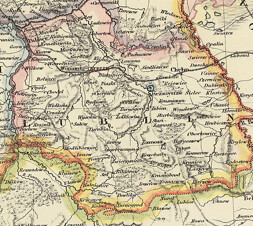

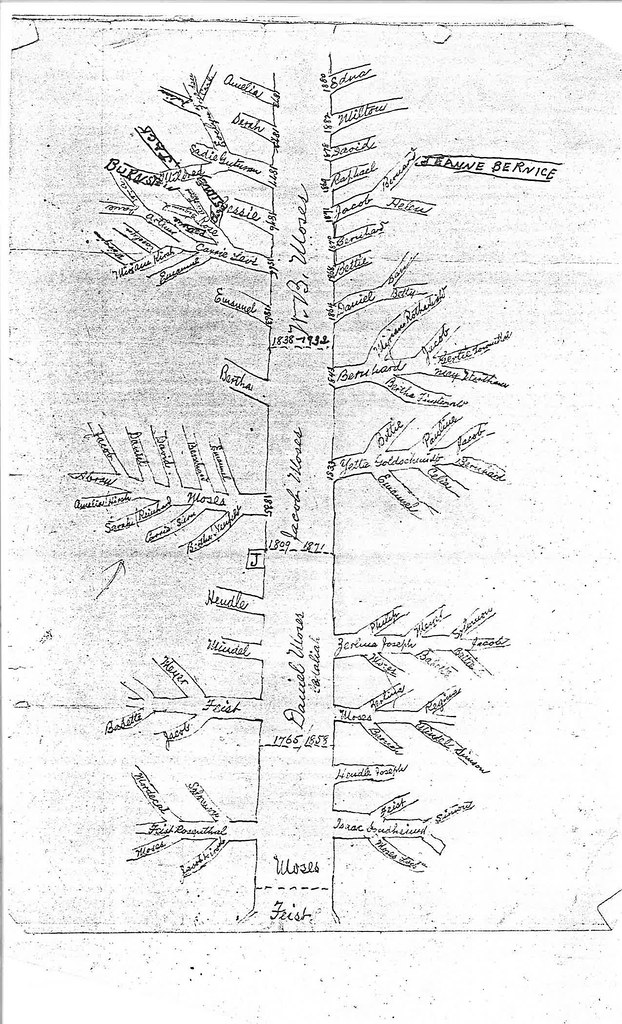
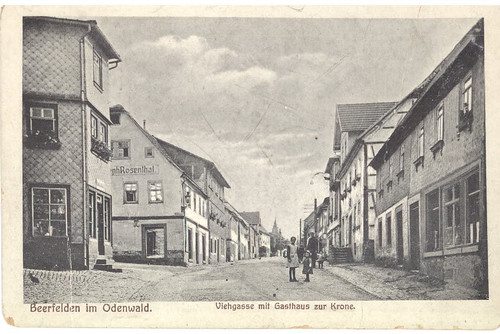

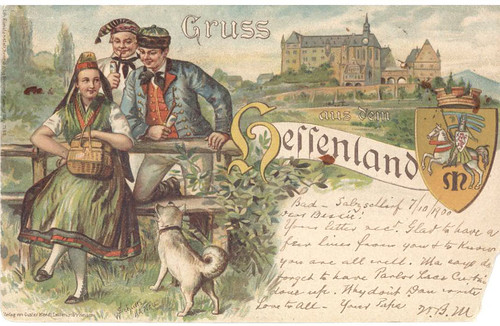
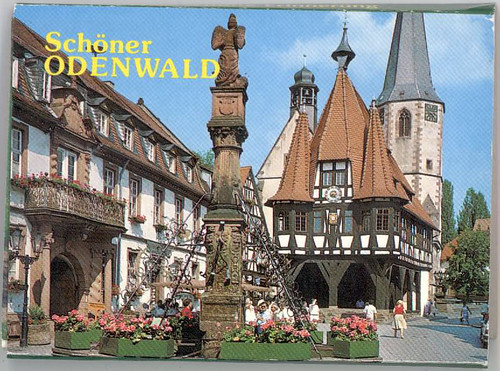

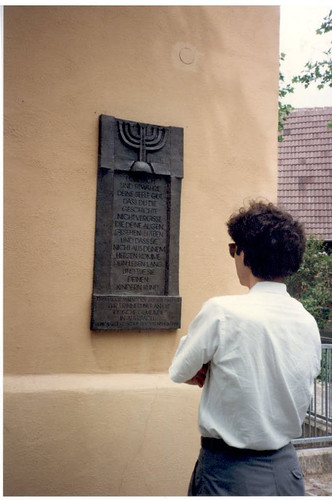
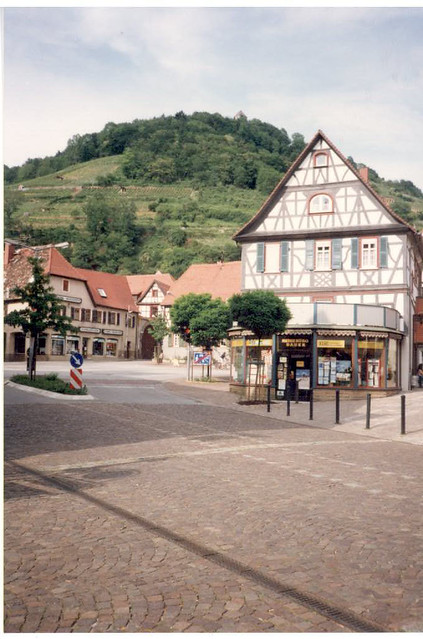
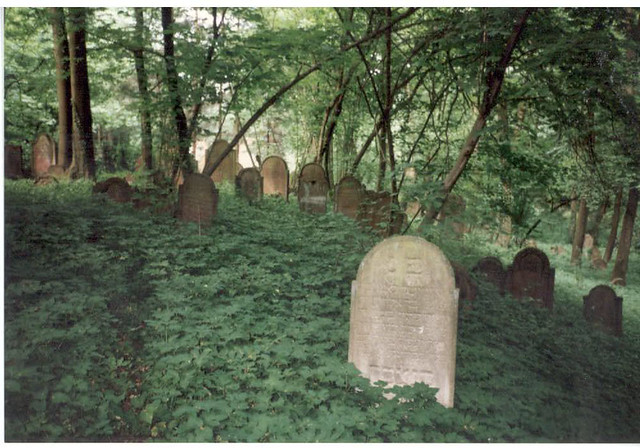




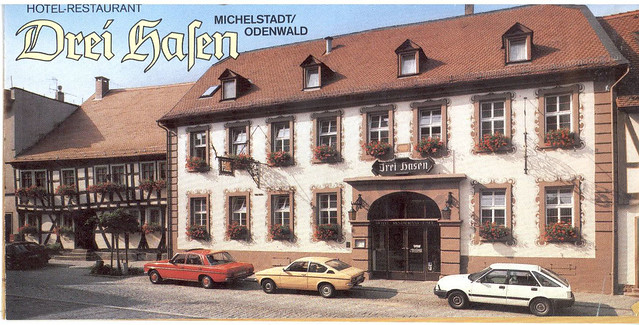


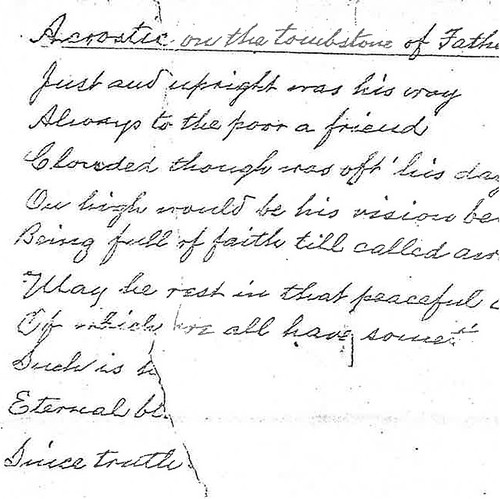
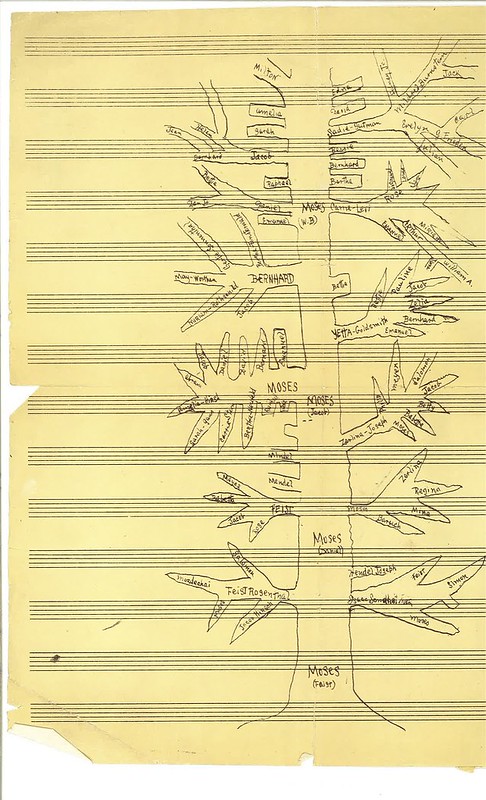
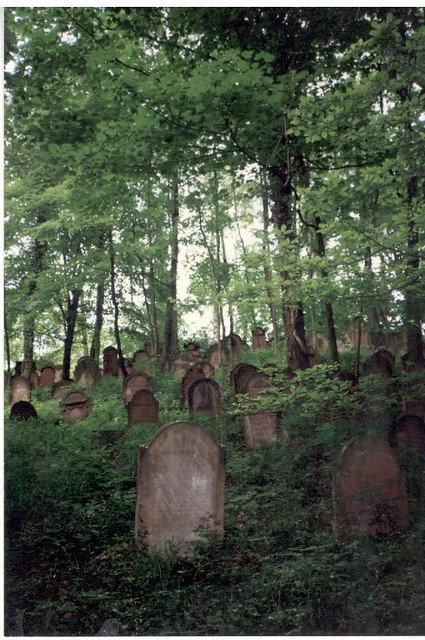

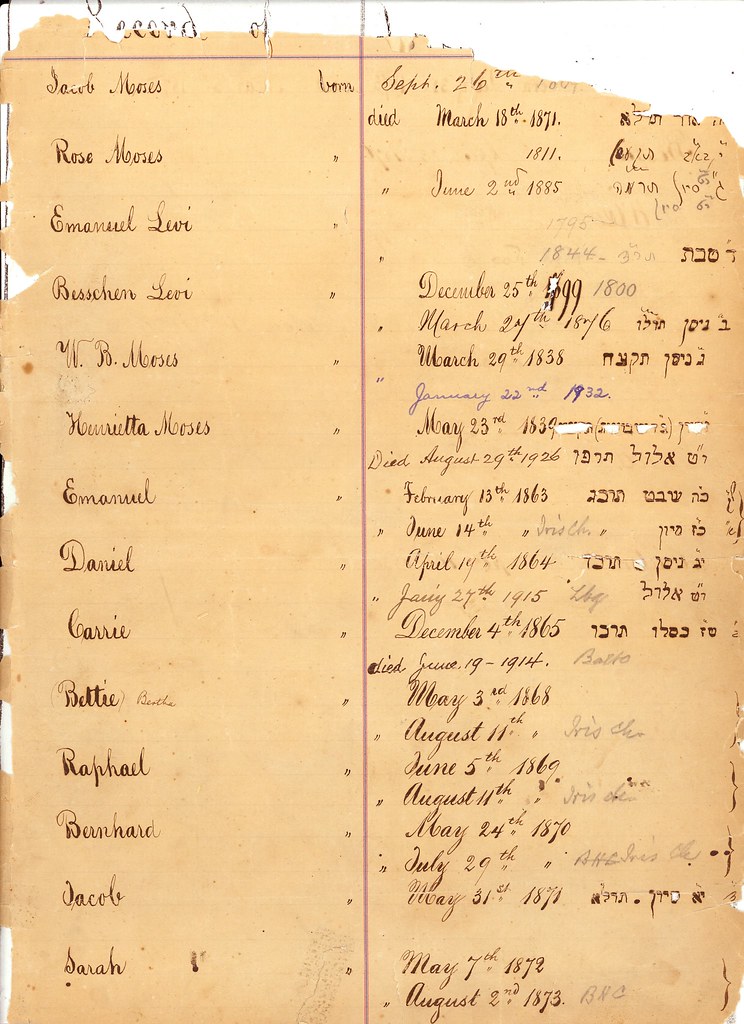




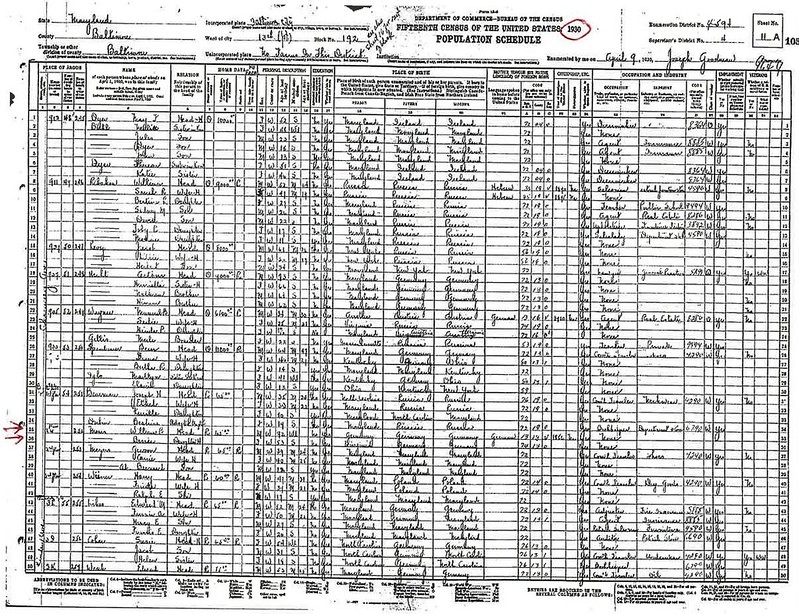

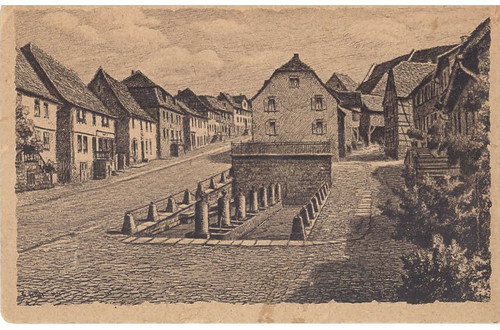



I was born in Beerfelden (American father/German mother) and spent many years as a youngster, later as a teenager, and then in my twenty s during my "hippie" years. I was struck by the one comment in your blog about the Jewish Cemetery not being in Beerfelden. Growing up I remember going there (it's located on the south side of town just below the Schlindgrund). Tombstones were just lying around and believe that it has been "renovated". I remember asking questions, a lot of them, about what it was like and what happened to the Jewish population. I knew a lady that ad worked in the synagogue as a cleaning lady. I'd love to chat with you should you be interested. Monroe DeVos. Monroedevos@bellsouth.net
Yes, there is a small Jewish cemetery in Beerfelden, which I recall having a few dozen graves from the early twentieth century. Because I was researching the period before 1855, I concentrated on the situation in the nineteenth century, when burials from Beerfelden took place in Michelstadt. Because of this, almost all of my ancestors were buried there. Thank you for your comment.
My mother tells me that there was a chapel within the cemetery which must have been burned down around 1939. Together with her sister, they often walked to the place and also picked blackberries. Our home being only 500m away from there I am passing by on my daily walk with our shepherd dog. I am often wondering about who is buried there and if there might be any relatives still alive today. Ken Frieden is the answer. Thank you
My family is Rosenthall from beerfelden', from both sides. I would be very grateful if I could received Uri kauffmans contact details if anyone has, just came across his book on the Jews of beerfelden, unfortunately
I dont speak German.
I have wondered if there were any living descendants of the Jewish community in Beerfelden and now I see there are. Although my ancestors from the area were Lutherans, the idea that there was a Jewish community in this small town in the Odenwald fascinates me. I wonder when the first Jews arrived and if there was any intermarriage between Jews and Christians way back centuries ago.
That's wonderful stuff you've written up here. Been searching for it all around. Great blog
Residential plots for sale in Cherupuzha | Famous Plots at cherupuzha | Top Plots for Sale in cherupuzha
I am also a descendant of the Jewish community in Beerfelden--my ancestors are the Marx (Lob and Babetta) and Herrmann (Jonas, Hannchen and Fradchen (Fanny)) families born in the early and mid 1800s).
My family is from Beerfelden. My grandfather was Isador Heilmann who married Bertha Rosenthal in 1922. Bertha has brothers and a sister who emigrated to UK. I would like to know the relationship to the Rosenthal family tree.